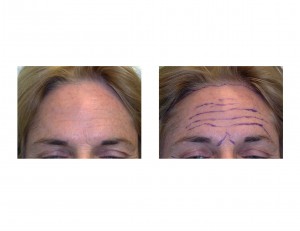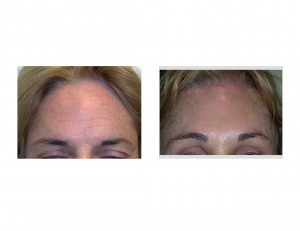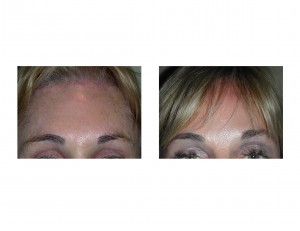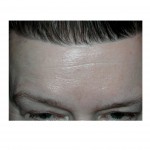Background: Aging of the upper face primarily involves that which appears in the forehead. Falling of the eyebrows onto or off of the brow bone and the appearance of horizontal and vertical wrinkles are the classic, and quite frankly, only aging signs that can appear. The amount, if any, of brow sagging is the key to whether one considers having a browlift. If one isn’t concerned about the position of the brows, then the non-surgical approach of Botox injections is a good treatment for wrinkle reduction.
In considering browlift surgery, there are numerous options based on the location and type of incision and how much muscle work can be done or is needed. The older traditional approach of a coronal or scalp incision browlift is today quite uncommonly done. The trade-off of a long scalp incision for higher brows is appealing to just a minority of patients. Browlift options in women, other than the scalp incision approach, is using a limited incision endoscopic technique or changing the scalp incision to the hairline. (pretrichial incision)

While she underwent other simultaneous facial rejuvenation procedures, a browlift was planned for the upper part of her ‘facelift’. The browlift was approached through a hairline incision to prevent the forehead from becoming longer. Preoperative markings were done delineating the forehead wrinkles and an irregular hairline incision was diagrammed at the very edge of the frontal hairline.



Case Highlights:
1 The single most important factor in determining what type of browlift is best for a woman is the length of the forehead between the hairline and the brows. The density of the frontal hairline and the amount and depth of forehead and glabellar wrinkles are also important considerations.
2) The hairline browlift offers the advantages of not lengthening one’s forehead while allowing optimal forehead and glabellar muscle removal. The frontal hairline can also be brought forward during closure to shorten the length of the forehead as well if the patient desires. The healing of the hairline scar is excellent and rarely needs any scar revision work.
3) The hairline browlift is also readily combined with other upper facial procedures such as forehead reshaping and midface lifts due to the good access and exposure provided.
Dr. Barry Eppley
Indianapolis Indiana


